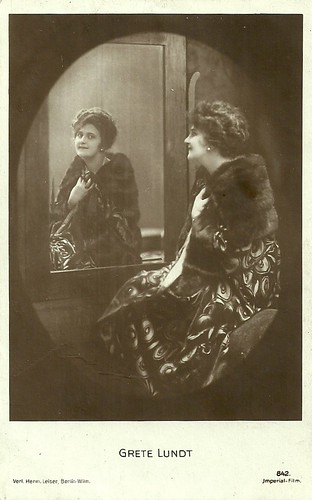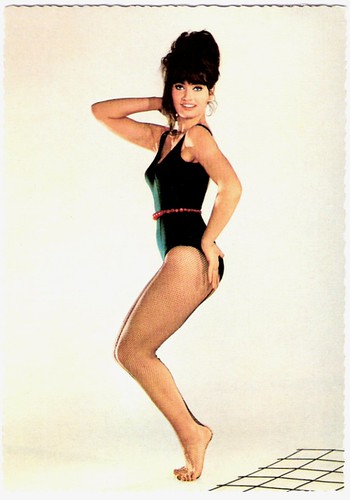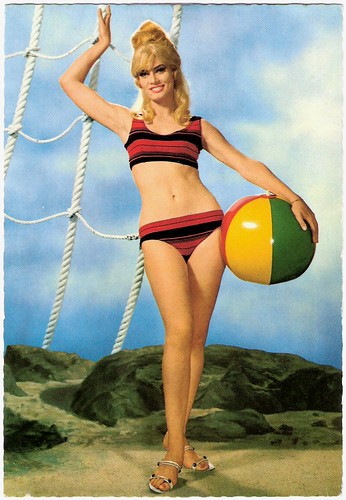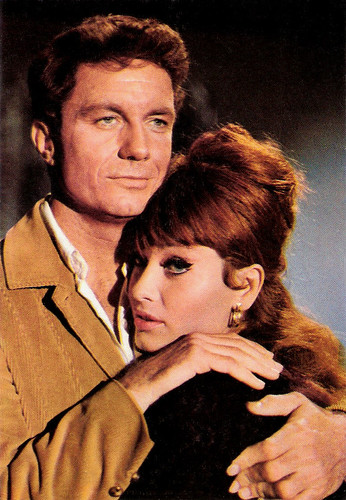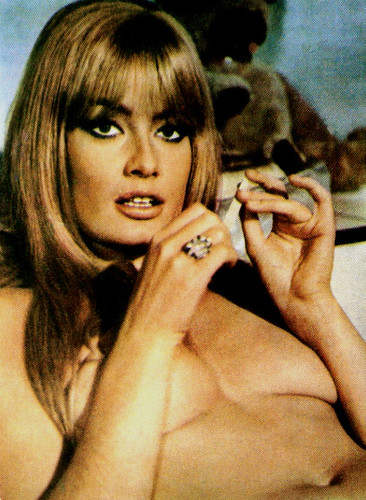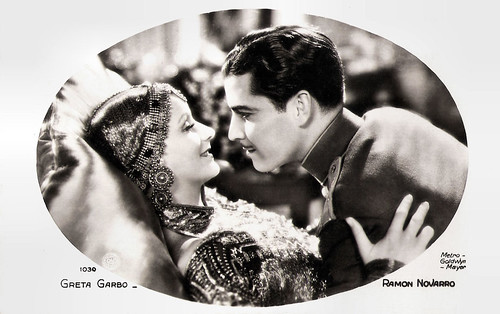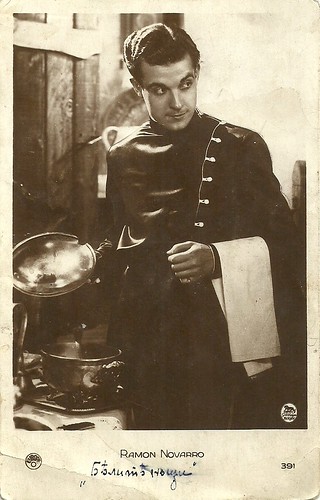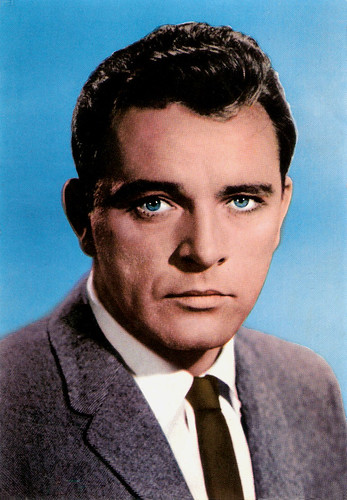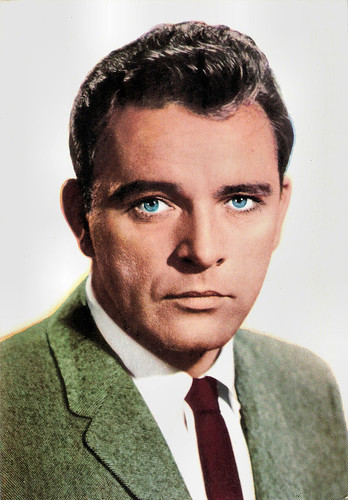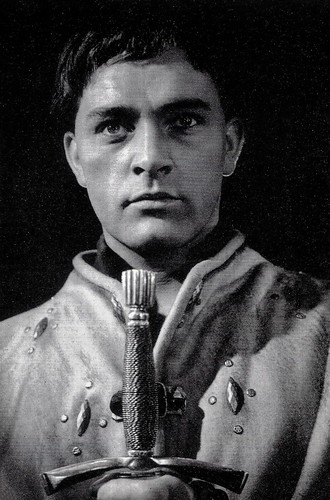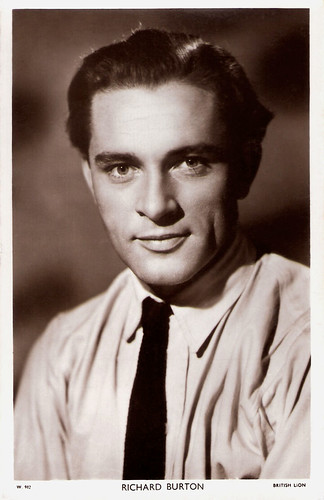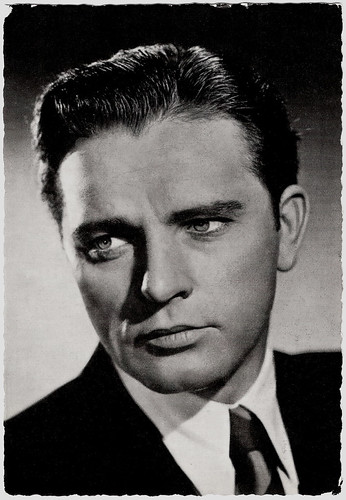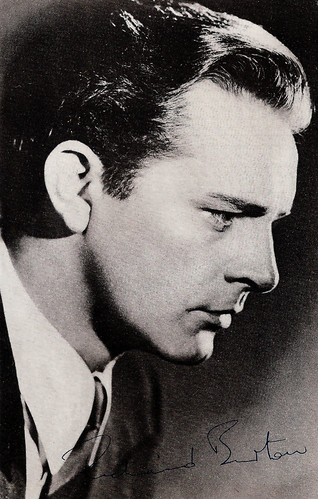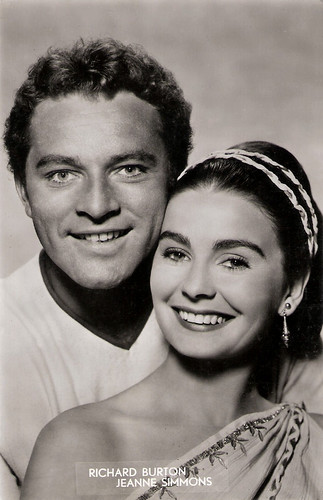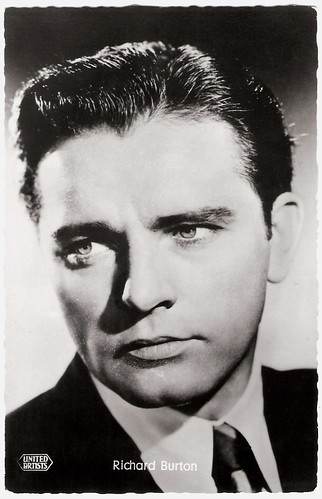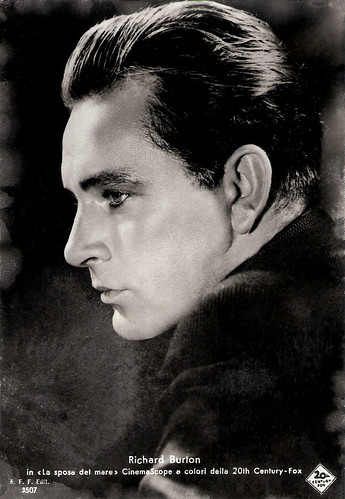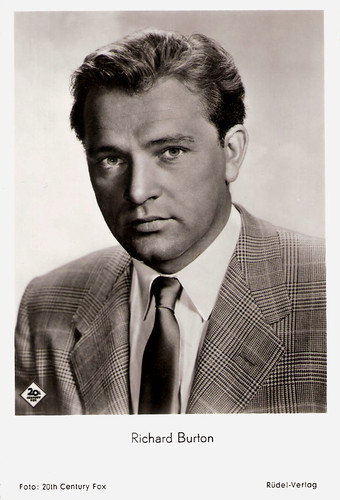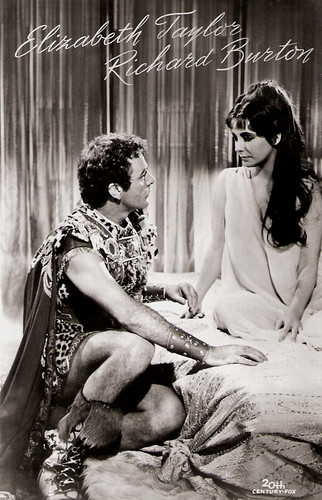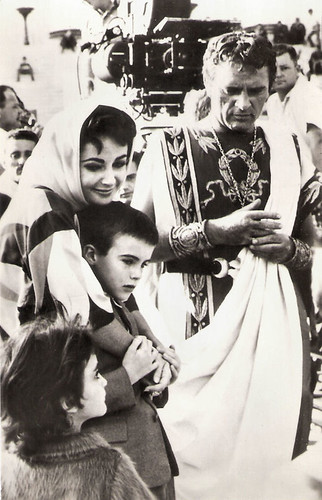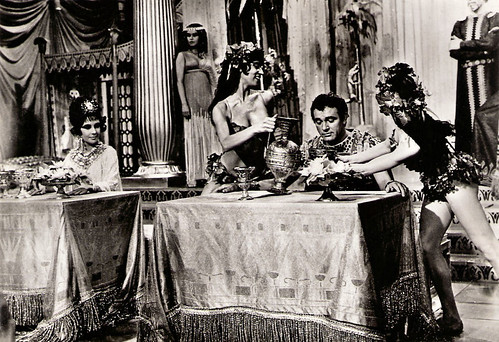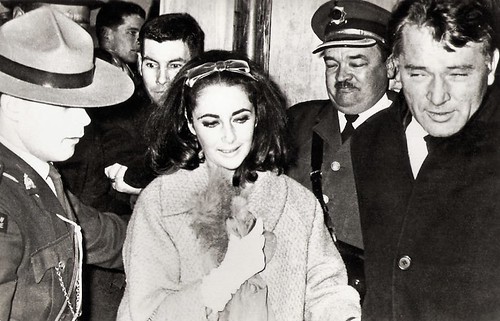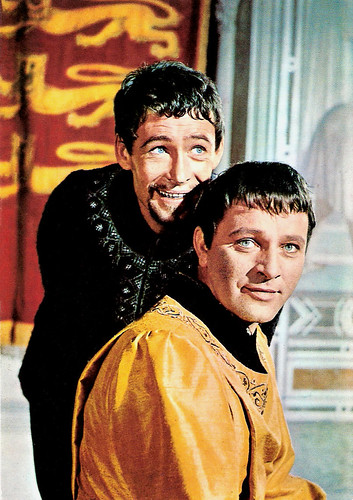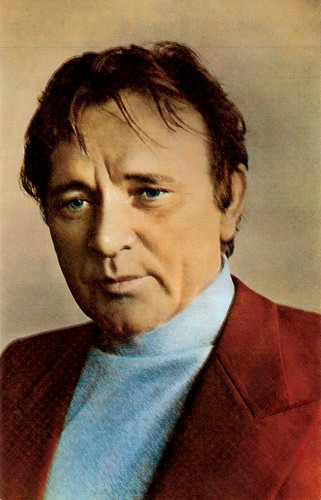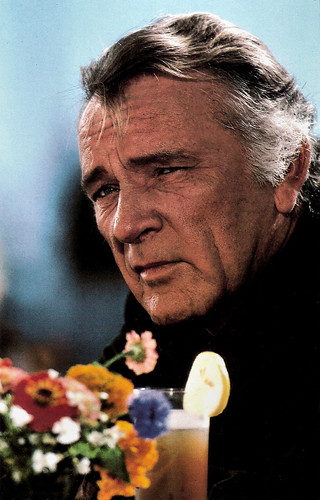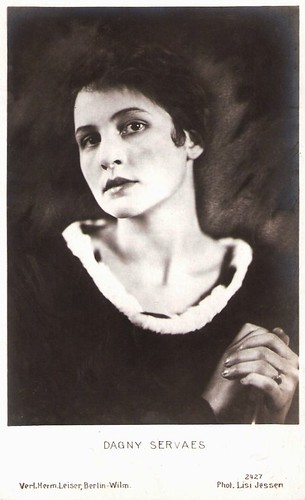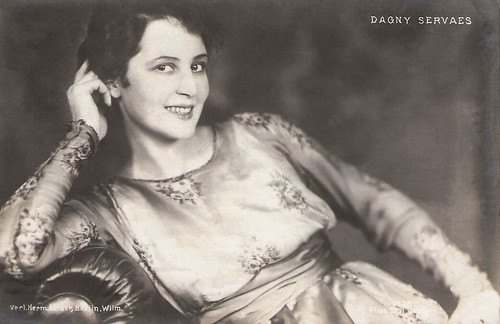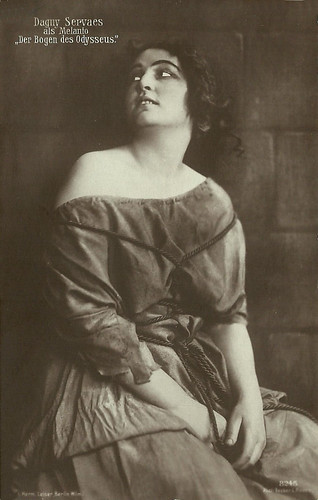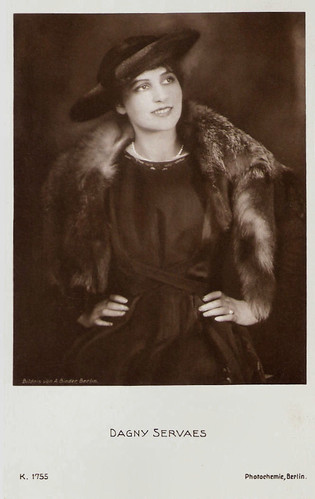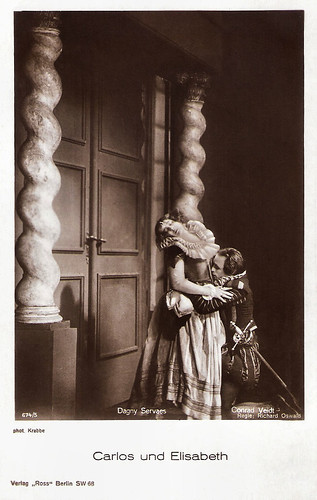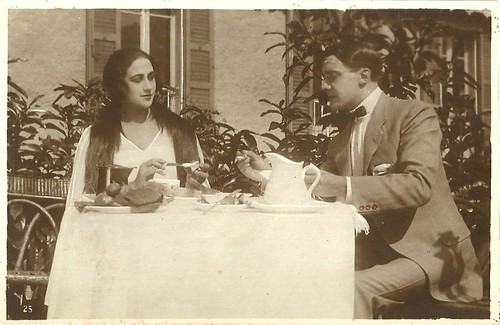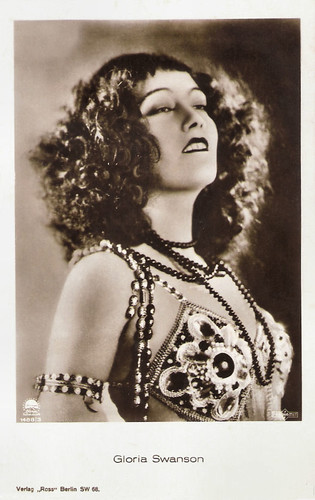ark, exotic-looking, petite Harriet Bosse (1878-1961) was a Norwegian-Swedish singer and actor. She starred in several of the plays by her first husband, August Strindberg. She also appeared in a classic of the Swedish silent cinema, Victor Sjöström's Ingmarssönerna/Sons of Ingmar (1919).
![Harriet Bosse]()
Swedish postcard by Förlag Nordisk Konst, Stockholm, no. 1056. Photo: A.B. Svenska Biografteatern, Stockholm.
Harriet Sofie Bosse [Bå'sse] was born in 1878 in Christiania (Oslo), Norway, from a German father, the publisher Heinrich Bosse, and a Danish mother, Anne-Marie Lehmann. Two of Bosse's older sisters, Alma and Dagmar, were already successful performers when Harriet was a small child.
Inspired by these role models, Harriet studied at the Royal Conservatory of Music in Stockholm. In the spring of 1897, after three years of study, she graduated with special grades in singing. Bosse debuted in 1896 on stage in Romeo and Juliet at the Tivoli Theater in Christiania, in a setting by her sister Alma Bosse and under direction of the latter's husband Johan Fahlström.
Alma was Harriet's rather authoritarian acting teacher. Their harmonious and sisterly teacher–pupil relationship became strained when Alma discovered that her husband Johan and Harriet were having an affair. Both Bosse parents were now dead, and Harriet, ordered by Alma to leave, used a modest legacy from her father to finance studies in Stockholm, Copenhagen, and at the conservatory of the Comédie Française in Paris. Wikipedia: "The Paris stage—at that time in dynamic conflict between traditional and experimental production styles—was inspirational for Bosse and convinced her that the low-key realistic acting style in which she was training herself was the right choice."
In 1899, she was engaged at the Royal Dramatic Theatre in Stockholm. Since she had difficulties with the Swedish language, she took lessons with a speech therapist to get rid of her Norwegian accent. At the Dramaten she played e.g. Hero in William Shakespeare’s Much Ado About Nothing (1902) and Nennele in Giacosa’s Come le foglie (1903).
In these years she met the renowned playwright August Strindberg. He was 51, she 22. Strindberg fell hard for her combination of a strong, modern and independent woman with delicate looks. He wrote plays especially for her, such as Till Damaskus (To Damascus), Påsk (Easter), and Ett drömspel (A Dream Play).
She felt intimidated and not yet up to his heavy roles but accepted to play Elena in Easter, which was a big breakthrough for her in 1901. Harriet Bosse once told how her engagement with Strindberg began: "Strindberg put his hands on my shoulders and looked deeply and sincerely at me and asked: - Would you like to have a small child with me, Miss Bosse? I curtsied and answered quite hypnotic: Yes, thank you. And then we were engaged."
![Harriet Bosse]()
Swedish postcard by Förlag Nordisk Konst, Stockholm, no. 1057. Photo: A.B. Svenska Biografteatern, Stockholm.
Harriet Bosse and August Strindberg would be married between 1901-1904 and had a daughter Anne-Marie (1902-2007). However, as modern as he was in his plays, as old-fashioned Strindberg was in his interior decoration, refusing to alter anything from his late 19th century style. Moreover, because of his agoraphobia he cancelled their honeymoon and gave her a Baedeker instead to do the virtual version. He was also an extremely jealous person, while she disliked her ‘imprisonment’. Not even the birth of their daughter in 1902 could save the marriage. As of 1902 they lived apart and they divorced in 1904.
In 1906 Harriet Bosse was engaged by Albert Ranft to the Swedish Theatre in Stockholm and became the theatre's big star in plays less conventional than at the Dramaten. She remarried with actor Gunnar Wingård in 1908 – with whom she had a son.
Though her marriage with Strindberg was over, Bosse played in 1907 in two Strindberg plays at the Svenska Teatern: Ett drömspel (A Dream Play) and Kronbruden (The Bridal Crown). With A Dream Play she wrote theatre history. She also kept up a relationship with Strindberg, leaving her daughter with him when on tour to e.g. Helsinki, until she remarried.
In addition she also acted in plays by e.g. Maxim Gorki (The Petty Bourgeois), Maurice Maeterlink (Pelléas et Mélisande), George Bernard Shaw (Man and Superman), Hermann Sudermann (Johannes), W. Somerset Maugham (Mrs Dot), Selma Lagerlöf (Gösta Berlings saga), and others.
She was engaged again at the Royal Dramatic Theatre in 1911 with the promise of playing heavier roles. In 1911 she also divorced Wingård for his infidelity or his spendthrift (versions vary). In 1912 Bosse was confronted with a series of disasters: Strindberg died, her second ex-husband killed himself, her sister’s son drowned with the Titanic, and Strindberg’s daughter Greta was killed in a train crash. Fans of Wingård threatened Bosse for having caused his suicide.
![Ingmarssönerna/ Sons of Ingmar]()
Swedish postcard by Nordisk Konst, Stockholm, no. 958/2. Photo: publicity still for Ingmarssönerna/Sons of Ingmar (Victor Sjöström, 1919). Caption: Brita from Bergskog.
![Ingmarssönerna/ Sons of Ingmar]()
Swedish postcard by Nordisk Konst, Stockholm, no. 958/8. Photo: publicity still for Ingmarssönerna/Sons of Ingmar (Victor Sjöström, 1919). Caption: I have to do something or I won't find any rest in my soul.
In 1919 Victor Sjöström directed Harriet Bosse in what was thought to be her breakthrough in cinema, and what still goes as a milestone in the Swedish naturalist cinema: Ingmarssönerna/Sons of Ingmar (Victor Sjöström, 1919).
It co-starred Victor Sjöström as a rich farmer’s son, Lill Ingmar [Little Ingmar], who because of his stern mother has caused his fiancee, the poor farmer woman Brita, trouble by postponing his marriage. So Brita gives birth to a baby out of wedlock, kills it out of despair and spends time in jail. In the end, after a discussion with the ghost of his forefather, Lill Ingmar repents, marries Brita and the two leave the bigot villagers. It was based on the first part of Sjöström’s adaptation of Selma Lagerlöf's novel Jerusalem, originally published 1901-1902.
In 1920 Sjöström would direct, and star in, the sequel Karin Ingmarsdotter, in which Bosse’s part in the previous film would only be referred to; instead the female lead was for Tora Teje.
Though Ingmarssönerna was hailed by critics, and afterwards director Ingmar Bergman confessed to have been deeply impressed by it, it didn’t mean a breakthrough in the cinema for Bosse, despite he fact she had been the star of the film. She only played in a forgotten German film, Kameraden/Comrades (Johannes Guter, 1919) with Alfred Abel.
Only 17 years after she would act in Bombi Bitt och jag/Bombi Bitt and I (1936), based on Fritiof Nilsson Piraten's popular first novel with the same title and directed by Gösta Rodin. Bombi Bitt was successful, but it was rather a lightweight production and with a smaller role for Bosse.
Bosse also played supporting parts in Anna Lans/The Sin of Anna Lans (Rune Carlsten, 1943), starring Viveca Lindfors as the title character, and Appassionata (Olof Molander 1944), again starring Lindfors.
In 1919-1921 Bosse played during the spring season at the Intimate theatre. In addition, she did guest performances in the provinces, as well as in Göteborg, Oslo and Helsingfors. In 1927 Bosse married for the third time, with popular actor and matinee idol Edvin Adolphson (until 1932). Her last ten years she acted at the Royal Dramatic Theatre (1933-1943). These she found it increasingly difficult to get interesting roles.
In May 1943, she went into retirement and in 1955 she moved to Norway, where her daughter lived with the family. She regretted her move though, dearly missing Stockholm. Harriet Bosse died in 1961 in Oslo.
![Ingmarssönerna/ Sons of Ingmar]()
Swedish postcard by Nordisk Konst, Stockholm, no. 958/10. Photo: publicity still for Ingmarssönerna/Sons of Ingmar (Victor Sjöström, 1919). Caption: And now the prison chaplain urges her to write to Ingmar.
![Ingmarssönerna/ Sons of Ingmar]()
Swedish postcard by Nordisk Konst, Stockholm, no. 958/13. Photo: publicity still for Ingmarssönerna/Sons of Ingmar (Victor Sjöström, 1919) with Victor Sjöström and Harriet Bosse. Caption:
Sources: Svensk Filmdatabas, Wikipedia (English and Swedish), and IMDb.

Swedish postcard by Förlag Nordisk Konst, Stockholm, no. 1056. Photo: A.B. Svenska Biografteatern, Stockholm.
A strong, modern and independent woman with delicate looks
Harriet Sofie Bosse [Bå'sse] was born in 1878 in Christiania (Oslo), Norway, from a German father, the publisher Heinrich Bosse, and a Danish mother, Anne-Marie Lehmann. Two of Bosse's older sisters, Alma and Dagmar, were already successful performers when Harriet was a small child.
Inspired by these role models, Harriet studied at the Royal Conservatory of Music in Stockholm. In the spring of 1897, after three years of study, she graduated with special grades in singing. Bosse debuted in 1896 on stage in Romeo and Juliet at the Tivoli Theater in Christiania, in a setting by her sister Alma Bosse and under direction of the latter's husband Johan Fahlström.
Alma was Harriet's rather authoritarian acting teacher. Their harmonious and sisterly teacher–pupil relationship became strained when Alma discovered that her husband Johan and Harriet were having an affair. Both Bosse parents were now dead, and Harriet, ordered by Alma to leave, used a modest legacy from her father to finance studies in Stockholm, Copenhagen, and at the conservatory of the Comédie Française in Paris. Wikipedia: "The Paris stage—at that time in dynamic conflict between traditional and experimental production styles—was inspirational for Bosse and convinced her that the low-key realistic acting style in which she was training herself was the right choice."
In 1899, she was engaged at the Royal Dramatic Theatre in Stockholm. Since she had difficulties with the Swedish language, she took lessons with a speech therapist to get rid of her Norwegian accent. At the Dramaten she played e.g. Hero in William Shakespeare’s Much Ado About Nothing (1902) and Nennele in Giacosa’s Come le foglie (1903).
In these years she met the renowned playwright August Strindberg. He was 51, she 22. Strindberg fell hard for her combination of a strong, modern and independent woman with delicate looks. He wrote plays especially for her, such as Till Damaskus (To Damascus), Påsk (Easter), and Ett drömspel (A Dream Play).
She felt intimidated and not yet up to his heavy roles but accepted to play Elena in Easter, which was a big breakthrough for her in 1901. Harriet Bosse once told how her engagement with Strindberg began: "Strindberg put his hands on my shoulders and looked deeply and sincerely at me and asked: - Would you like to have a small child with me, Miss Bosse? I curtsied and answered quite hypnotic: Yes, thank you. And then we were engaged."

Swedish postcard by Förlag Nordisk Konst, Stockholm, no. 1057. Photo: A.B. Svenska Biografteatern, Stockholm.
A Baedeker for a virtual honeymoon
Harriet Bosse and August Strindberg would be married between 1901-1904 and had a daughter Anne-Marie (1902-2007). However, as modern as he was in his plays, as old-fashioned Strindberg was in his interior decoration, refusing to alter anything from his late 19th century style. Moreover, because of his agoraphobia he cancelled their honeymoon and gave her a Baedeker instead to do the virtual version. He was also an extremely jealous person, while she disliked her ‘imprisonment’. Not even the birth of their daughter in 1902 could save the marriage. As of 1902 they lived apart and they divorced in 1904.
In 1906 Harriet Bosse was engaged by Albert Ranft to the Swedish Theatre in Stockholm and became the theatre's big star in plays less conventional than at the Dramaten. She remarried with actor Gunnar Wingård in 1908 – with whom she had a son.
Though her marriage with Strindberg was over, Bosse played in 1907 in two Strindberg plays at the Svenska Teatern: Ett drömspel (A Dream Play) and Kronbruden (The Bridal Crown). With A Dream Play she wrote theatre history. She also kept up a relationship with Strindberg, leaving her daughter with him when on tour to e.g. Helsinki, until she remarried.
In addition she also acted in plays by e.g. Maxim Gorki (The Petty Bourgeois), Maurice Maeterlink (Pelléas et Mélisande), George Bernard Shaw (Man and Superman), Hermann Sudermann (Johannes), W. Somerset Maugham (Mrs Dot), Selma Lagerlöf (Gösta Berlings saga), and others.
She was engaged again at the Royal Dramatic Theatre in 1911 with the promise of playing heavier roles. In 1911 she also divorced Wingård for his infidelity or his spendthrift (versions vary). In 1912 Bosse was confronted with a series of disasters: Strindberg died, her second ex-husband killed himself, her sister’s son drowned with the Titanic, and Strindberg’s daughter Greta was killed in a train crash. Fans of Wingård threatened Bosse for having caused his suicide.

Swedish postcard by Nordisk Konst, Stockholm, no. 958/2. Photo: publicity still for Ingmarssönerna/Sons of Ingmar (Victor Sjöström, 1919). Caption: Brita from Bergskog.

Swedish postcard by Nordisk Konst, Stockholm, no. 958/8. Photo: publicity still for Ingmarssönerna/Sons of Ingmar (Victor Sjöström, 1919). Caption: I have to do something or I won't find any rest in my soul.
A milestone in the Swedish naturalist cinema
In 1919 Victor Sjöström directed Harriet Bosse in what was thought to be her breakthrough in cinema, and what still goes as a milestone in the Swedish naturalist cinema: Ingmarssönerna/Sons of Ingmar (Victor Sjöström, 1919).
It co-starred Victor Sjöström as a rich farmer’s son, Lill Ingmar [Little Ingmar], who because of his stern mother has caused his fiancee, the poor farmer woman Brita, trouble by postponing his marriage. So Brita gives birth to a baby out of wedlock, kills it out of despair and spends time in jail. In the end, after a discussion with the ghost of his forefather, Lill Ingmar repents, marries Brita and the two leave the bigot villagers. It was based on the first part of Sjöström’s adaptation of Selma Lagerlöf's novel Jerusalem, originally published 1901-1902.
In 1920 Sjöström would direct, and star in, the sequel Karin Ingmarsdotter, in which Bosse’s part in the previous film would only be referred to; instead the female lead was for Tora Teje.
Though Ingmarssönerna was hailed by critics, and afterwards director Ingmar Bergman confessed to have been deeply impressed by it, it didn’t mean a breakthrough in the cinema for Bosse, despite he fact she had been the star of the film. She only played in a forgotten German film, Kameraden/Comrades (Johannes Guter, 1919) with Alfred Abel.
Only 17 years after she would act in Bombi Bitt och jag/Bombi Bitt and I (1936), based on Fritiof Nilsson Piraten's popular first novel with the same title and directed by Gösta Rodin. Bombi Bitt was successful, but it was rather a lightweight production and with a smaller role for Bosse.
Bosse also played supporting parts in Anna Lans/The Sin of Anna Lans (Rune Carlsten, 1943), starring Viveca Lindfors as the title character, and Appassionata (Olof Molander 1944), again starring Lindfors.
In 1919-1921 Bosse played during the spring season at the Intimate theatre. In addition, she did guest performances in the provinces, as well as in Göteborg, Oslo and Helsingfors. In 1927 Bosse married for the third time, with popular actor and matinee idol Edvin Adolphson (until 1932). Her last ten years she acted at the Royal Dramatic Theatre (1933-1943). These she found it increasingly difficult to get interesting roles.
In May 1943, she went into retirement and in 1955 she moved to Norway, where her daughter lived with the family. She regretted her move though, dearly missing Stockholm. Harriet Bosse died in 1961 in Oslo.

Swedish postcard by Nordisk Konst, Stockholm, no. 958/10. Photo: publicity still for Ingmarssönerna/Sons of Ingmar (Victor Sjöström, 1919). Caption: And now the prison chaplain urges her to write to Ingmar.

Swedish postcard by Nordisk Konst, Stockholm, no. 958/13. Photo: publicity still for Ingmarssönerna/Sons of Ingmar (Victor Sjöström, 1919) with Victor Sjöström and Harriet Bosse. Caption:
Sources: Svensk Filmdatabas, Wikipedia (English and Swedish), and IMDb.

























